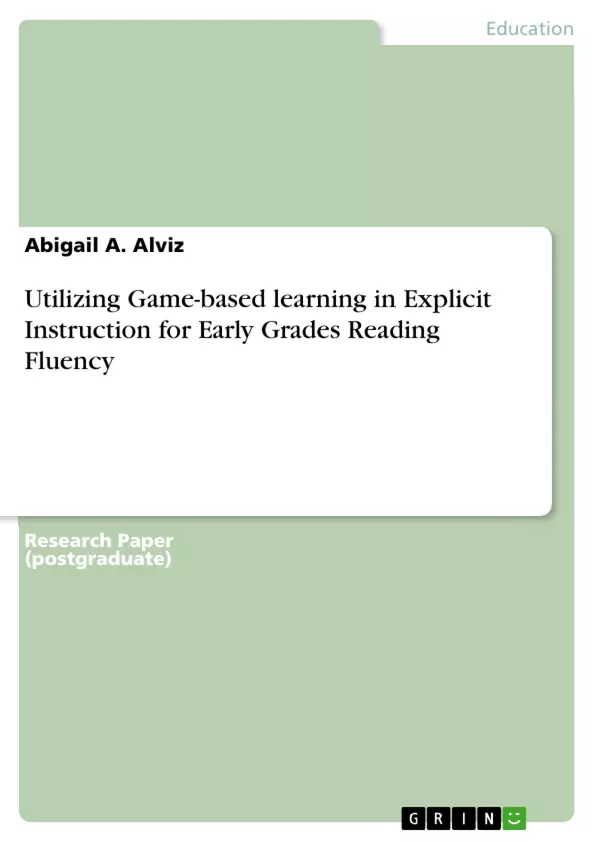The main objective of this study is to incorporate explicit instruction and GBL for early grades reading to improve reading fluency. The study also aims to probe if significant correlation exists between explicit instruction and GBL.
Inhaltsverzeichnis (Table of Contents)
- Introduction
- Conceptual Framework
- Explicit Instruction and Early Grades Reading
- Game-based learning: Monkey Junior
- Research Questions
- Research Design
Zielsetzung und Themenschwerpunkte (Objectives and Key Themes)
This study aims to investigate the effectiveness of incorporating game-based learning (GBL) into explicit instruction for improving reading fluency in early grades. It explores the potential correlation between explicit instruction and GBL, and investigates the pedagogical implications of using GBL to enhance early grade reading performance.
- The importance of reading fluency in early grades
- The challenges faced by struggling readers in the Philippines
- The potential of game-based learning as a tool for improving reading fluency
- The role of explicit instruction in facilitating reading development
- The implications of using GBL for early grade reading instruction
Zusammenfassung der Kapitel (Chapter Summaries)
- Introduction: This chapter provides an overview of the importance of reading fluency in early grades and highlights the challenges faced by struggling readers in the Philippines. It also discusses the potential of game-based learning (GBL) as a tool for improving reading fluency.
- Conceptual Framework: This chapter outlines the theoretical framework guiding the study, drawing on Garris, Ahlers, and Driskell's (2002) model of GBL in education. It explores the concept of situated learning and its relevance to GBL.
- Explicit Instruction and Early Grades Reading: This chapter examines the principles of explicit instruction and its effectiveness in promoting reading development. It discusses the key components of reading fluency, including accuracy, automaticity, and prosodic reading.
- Game-based learning: Monkey Junior: This chapter introduces Monkey Junior, a downloadable software application containing a comprehensive reading program that utilizes game-based learning to enhance reading skills.
Schlüsselwörter (Keywords)
Key terms and concepts in this work include early grades reading, reading fluency, game-based learning, explicit instruction, Monkey Junior, literacy development, and educational technology.
- Quote paper
- Abigail A. Alviz (Author), 2018, Utilizing Game-based learning in Explicit Instruction for Early Grades Reading Fluency, Munich, GRIN Verlag, https://www.grin.com/document/436031



